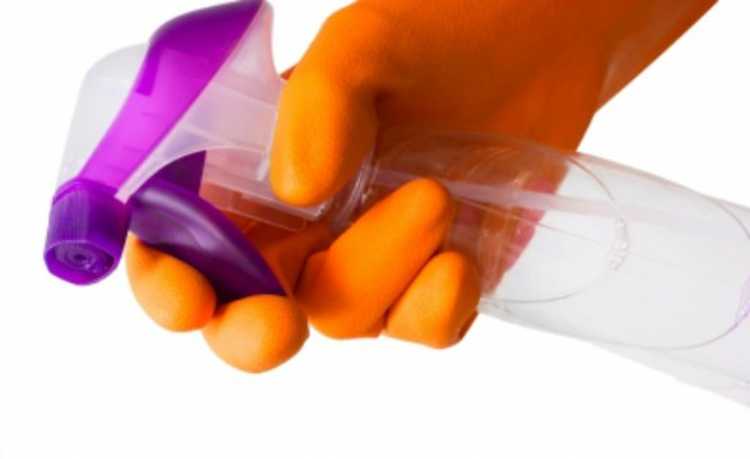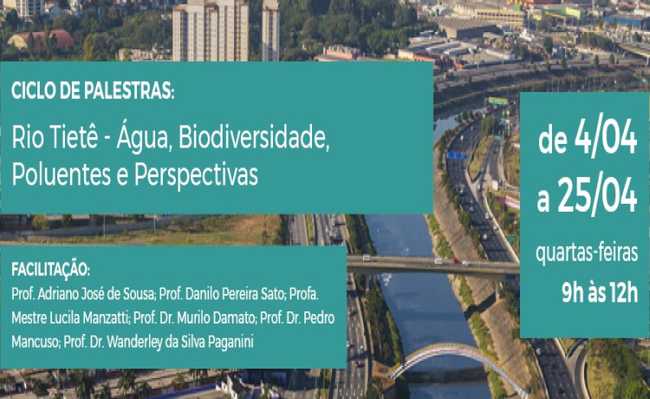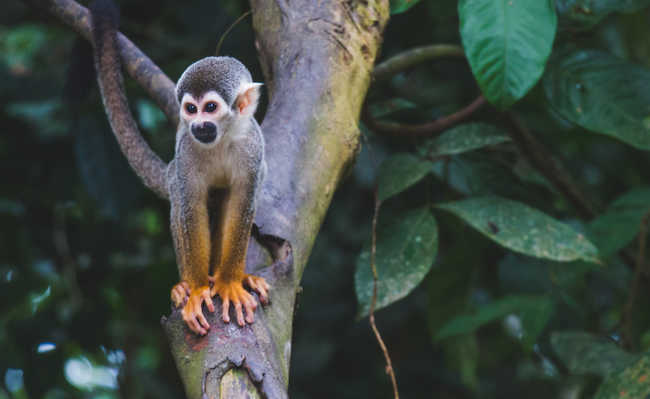Brazil is the 4th largest producer of plastic waste in the world and recycles less than 2%
A study carried out by the WWF (World Nature Fund) shows that our country produces 11 million tons of plastic waste per year - and most ends up without the correct destination

Image: Troy Mayne/WWF
The global crisis of plastics pollution will only get worse unless all actors in the plastics value chain take responsibility for the material's real cost to nature and people, warns a published WWF (World Wide Fund for Nature) report today. The new study, “Resolving Plastic Pollution: Transparency and Accountability”, reinforces the urgency of a global agreement to contain plastic pollution.
The proposal for this global agreement will be voted on at the United Nations Environment Assembly (UNEA-4), which will be held in Nairobi, Kenya, from 11 to 15 March. According to the WWF study, more than 104 million tons of plastic will pollute our ecosystems by 2030 if no change takes place in our relationship with the material.
In February, the WWF launched a petition to pressure global leaders to uphold this legally binding agreement on marine plastics pollution at UNEA-4, which has so far attracted 200,000 signatures worldwide. To participate in the petition, go to: bit.ly/OceanoSemPlastico
According to the study released by the WWF, the volume of plastic that leaks into the oceans every year is approximately 10 million tons, which is equivalent to 23,000 Boeing 747 planes landing in the seas and oceans every year – there are more than 60 per day. At this rate, by 2030, we will find the equivalent of 26,000 plastic bottles in the sea per km2, reveals the study conducted by the WWF.
"Our current method of producing, using and disposing of plastic is fundamentally bankrupt. It is a system without liability, and it currently operates in a way that virtually guarantees that increasing volumes of plastic leak into nature," says Marco Lambertini, Director- General of WWF-International.
According to the study, “Plastic is not inherently harmful. It is a man-made invention that has generated significant benefits for society. Unfortunately, the way industries and governments have dealt with plastic and the way society has turned it into a single-use disposable convenience has turned this innovation into a global environmental disaster.
Approximately half of all plastic products that pollute the world today were created after 2000. This problem is only a few decades old, and yet 75% of all plastic ever produced has already been discarded.”
In Brazil
Brazil, according to data from the World Bank, is the 4th largest producer of plastic waste in the world, with 11.3 million tons, only behind the United States, China and India. Of this total, more than 10.3 million tons were collected (91%), but only 145 thousand tons (1.28%) are actually recycled, that is, reprocessed in the production chain as a secondary product. This is one of the lowest rates in the survey and well below the global average for plastic recycling, which is 9%.
Even partially passing through recycling plants, there are losses in the separation of types of plastic (for reasons such as being contaminated, being multilayered or of low value). In the end, the destination of 7.7 million tons of plastic is landfills. And another 2.4 million tons of plastic are disposed of irregularly, without any kind of treatment, in open dumps.
The survey carried out by the WWF based on data from the World Bank analyzed the relationship with plastic in more than 200 countries, and pointed out that Brazil produces, on average, approximately 1 kilo of plastic waste per inhabitant each week.
Plastic production and recycling in the world
Numbers in tons

Source: WWF / World Bank (What a Waste 2.0: A Global Snapshot of Solid Waste Management to 2050)
*Total value of plastic waste disposed of in solid urban waste, industrial waste, construction waste, electronic waste and agricultural waste, in the manufacture of products for one year.
“It's time to change the way we see the problem: there is a huge plastic leak that pollutes nature and threatens life. The next step for concrete solutions is to work together through legal frameworks that call to action those responsible for the waste generated. Only then will there be urgent changes in the production chain of everything we consume,” says Mauricio Voivodic, Executive Director of WWF-Brazil.
Socio-environmental impact
Plastic pollution affects the quality of air, soil and water supply systems. Direct impacts are related to global non-regulation of plastic waste treatment, ingestion of micro and nanoplastics (invisible to the eyes) and soil contamination with waste.
Burning or incinerating plastic can release toxic gases, halogens and nitrogen dioxide and sulfur dioxide into the atmosphere, which are extremely harmful to human health. Outdoor disposal also pollutes aquifers, water bodies and reservoirs, causing increased respiratory problems, heart disease and damage to the nervous system of exposed people.
In soil pollution, one of the villains is microplastic from household laundry washing and nanoplastic from the cosmetics industry, which end up being filtered in the city's water treatment system and accidentally used as fertilizer, amid the sludge of residual sewage . When not filtered, these particles end up being released into the environment, increasing contamination.
Micro and nanoplastics are still being consumed by humans via ingestion of salt, fish, mainly shellfish, mussels and oysters. Studies indicate that 241 out of 259 bottles of water are also contaminated with microplastics. Although alarming, the long-term impacts of this human exposure are still little known.
Although there are still few studies on the impact of plastic ingestion by humans and other animal species, the World Health Organization (WHO) declared, in 2018, that understanding the effects of microplastic in drinking water is an important step to measure the impact of plastic pollution on humans.
On the way to solutions
The WWF study also points out possible solutions and paths capable of stimulating the creation of a circular plastic value chain. Designed for each link in the system, which involves the production, consumption, disposal, treatment and reuse of plastic, the proposed necessary care offers guidance for the public and private sectors, the recycling industry and the final consumer, so that everyone consumes less plastic virgin (the new plastic) and establish a complete circular chain. The main points of the proposal are:
Each producer is responsible for their plastic production
The market value of virgin plastic is not real as it does not quantify the damage caused to the environment and does not consider investments in reuse or recycling. Mechanisms are needed to ensure that the price of virgin plastic reflects its negative impact on nature and society, which would encourage the use of alternative and reused materials.
Zero plastic leakage in the oceans
The cost of recycling is affected by the lack of collection and factors such as unreliable waste, that is, mixed or contaminated. Collection fees will be higher if responsibility for correct disposal is placed with companies producing plastic products and not just with the final consumer, as they will be encouraged to seek cleaner materials from their design to disposal.
Reuse and recycling being the basis for the use of plastic
Recycling is more profitable when the product can be reused in the secondary market. In other words, the success of this process depends on what value this plastic is traded and its volume (which allows meeting industrial demands). Price, to a large extent, depends on the quality of the material, and this quality can be guaranteed when there are few impurities in the plastic, and when it is uniform – usually from the same source. A separation system involving companies that produce plastic helps make this uniformity and volume viable, increasing the chance of reuse.
Replace the use of virgin plastic with recycled materials
Single-source plastic products with few additives reduce waste management costs and improve the quality of secondary-use plastic. Therefore, the design and material of a product are essential to reduce this impact, and companies are responsible for solutions.
Reducing plastic consumption results in more choice of materials that serve as an option to virgin plastic, ensuring that its price fully reflects its cost in nature and thus discouraging the single-use model. “Creating a circular plastic value chain requires improving separation processes and increasing disposal costs, encouraging the development of structures for waste treatment,” says Gabriela Yamaguchi, Director of Engagement at WWF-Brasil.
Biodiversity
It is estimated that the plastic waste in soils and rivers is even greater than in the oceans, impacting the lives of many animals and contaminating many ecosystems, now covering the four corners of the world – including Antarctica.
“In Brazil, most of the marine litter found on the coast is plastic. In recent decades, the increase in fish consumption has increased by almost 200%. Research carried out in the country proved that seafood has a high rate of heavy toxins generated from plastic in its body, therefore, there is a direct impact of plastics on human health. Even the coral colonies – which are the 'underwater forests' – are dying. It is necessary to remember that the oceans are responsible for 54.7% of all the oxygen on Earth”, says Anna Carolina Lobo, Manager of the Atlantic and Marine Forest Program at WWF-Brazil.
Created as a practical solution for everyday life and widespread in society from the second half of the 20th century, plastic has long been drawing attention for the pollution it generates, since the material, made mainly from oil and gas, with chemical additives, it takes approximately 400 years to fully decompose in nature.
Estimates indicate that, since 1950, more than 160 million tons of plastic have been deposited in the world's oceans. Still, studies indicate that plastic pollution in terrestrial ecosystems can be at least four times greater than in the oceans.
The main damage of plastic to nature can be listed as strangulation, ingestion and habitat damage.
The strangulation of animals by pieces of plastic has been recorded in more than 270 animal species, including mammals, reptiles, birds and fish, causing from acute and even chronic injuries, or even death. This bottleneck is now one of the biggest threats to wildlife and biodiversity conservation.
Plastic ingestion has been recorded in more than 240 species. Most animals develop ulcers and digestive blockages that result in death, as plastic often cannot get through their digestive system.
Weight in the economy
Plastic pollution causes more than $8 billion in damage to the global economy. A survey by UNEP – United Nations Environment Program – points out that the main sectors directly affected are fishing, maritime trade and tourism. While plastic waste in the oceans harms boats and ships used in fishing and maritime commerce, plastic in waters has reduced the number of tourists in more exposed areas, such as Hawaii, the Maldives and South Korea.
Download the full study in Portuguese.










